Eastman Kodak (NASDAQOTH: EKDKQ ) is selling off another piece of itself, announcing Monday that Brother Industries has agreed to make a "stalking horse" bid for certain assets of its Document Imaging business, which manufactures scanners and provides scanning software and related products to businesses.
Brother --�a leading manufacturer of laser, label, and multifunction printers as well as fax machines and sewing machines -- has offered to buy these assets for $210 million, assuming no better offers are received. In addition, if it wins the bid, Brother would assume $67 million worth of "deferred service revenue liability"�-- essentially debt that raises the value of the transaction.
Kodak will now proceed to seek out higher bids for the assets, through means that may include a bankruptcy court-supervised auction. A final decision on the sale is not expected before June. Kodak CEO Antonio M. Perez was quoted by the company as saying, "A sale to Brother, should they prevail, would represent an excellent outcome for Document Imaging's customers, partners and employees."
Top Bank Stocks To Watch For 2014: Commonwealth Bank of Australia (CBA.AX)
Commonwealth Bank of Australia (the Bank) is engaged in the provision of a range of banking and financial products and services to retail, small business, corporate and institutional clients. The Bank is a provider of integrated financial services, including retail, business and institutional banking, superannuation, life insurance, general insurance, funds management, broking services and finance company activities. Its operating segments include Retail Banking Services, Business and Private Banking, Institutional Banking and Markets, Wealth Management, New Zealand, Bankwest and Other. Its retail banking services include home loans, consumer finance, retail deposits and distribution. Its business and private banking include corporate financial services, regional and agribusiness banking, local business banking, private bank and equities and margin lending. The Bank and its subsidiaries ceased to be a substantial holder in Ten Network Holdings Limited, as of September 12, 2012.
Top Bank Stocks To Watch For 2014: Capital One Financial Corporation(COF)
Capital One Financial Corporation operates as the bank holding company for the Capital One Bank (USA), National Association (COBNA), and Capital One, National Association (CONA), which provide various financial products and services in the United States, the United Kingdom, and Canada. It offers consumer and small business credit card lending, national closed end installment lending, and the international credit card lending services. The company also provides various non-interest bearing and interest-bearing deposits, including demand deposits, money market deposits, negotiable order of withdrawal accounts, savings accounts, certificates of deposit, and other consumer time deposits. Its loan portfolio comprises credit card loans; consumer loans, such as auto, home, and retail banking loans; and commercial loans, including commercial and multifamily real estate, middle market, specialty lending, and small-ticket commercial real estate loans. In addition, the company provid es mortgage banking, treasury management, and depository services. It primarily serves consumers, small businesses, and commercial clients through branches, the Internet, and other distribution channels. The company was founded in 1993 and is headquartered in McLean, Virginia.
Advisors' Opinion: - [By Matthew Scott]
While I disapprove of its cheesy advertisements for Capital One (NYSE: COF) and its generally high percentage rate credit cards, Capital One is one financial services company that has a real opportunity for growth coming out of the recession. Capital One stock price increased six times in two years, jumping from $8.63 on March 9, 2009 to $51.96 at the end of the first quarter. Since the bank wasn’t in the “too big to fail” category before the recession, it has been able to expand its number of branches over the last two years when times were tough, growing profits at the same time. As consumers begin using credit cards again as the economy improves, Capital One stands to benefit.
- [By Elissa]
As one of the most recognizable and reputable financial companies in the United States, Capital One offers a wide range of services to individuals and small businesses. It focuses on the areas of checking, savings, loans and investments. It earns about $2.7 billion every year.
- [By Kathy Kristof]
There's also opportunity in a big bank that follows a different path than others on this list. Capital One Financial (COF) is one of the nation's biggest credit card issuers and may be best known for its tongue-in-cheek commercials featuring Alec Baldwin and former basketball star Charles Barkley. The bank's earnings were up nearly 12% last year, but earnings per share declined because the number of shares outstanding rose after the completion of two mergers in 2012. The mergers turned Capital One into one of the nation's largest banks by deposits, but its market capitalization of $31.8 billion is only one-fourth that of Citi and BofA.
Capital One focuses more on consumers and less on businesses than the other banking behemoths. It generates about three-fourths of its income from credit cards and consumer loans. The improving financial health of the consumer sector is driving down Capital One's default rates and is helping to put the company in a position to meet increasingly stringent regulatory capital requirements well ahead of schedule.
financial health of the consumer sector is driving down Capital One's default rates and is helping to put the company in a position to meet increasingly stringent regulatory capital requirements well ahead of schedule.
In fact, the bank is so well capitalized that regulators recently gave it permission to hike its quarterly dividend sixfold, to 30 cents per share. At $55.07, the stock yields 2.2% on the new dividend rate and sells for 8.6 times projected 2013 earnings. That's below Capital One's estimated long-term earnings growth rate of 9.3% a year, suggesting that the stock is undervalued. RBC analysts believe the shares will reach $67 over the coming year.
5 Best Blue Chip Stocks To Buy Right Now: New York Community Bancorp Inc (NYCB.N)
New York Community Bancorp, Inc. is a bank holding company and a producer of multi-family mortgage loans in New York City, with an emphasis on apartment buildings that feature below-market rents. It has two bank subsidiaries: New York Community Bank (the Community Bank),New York Commercial Bank (the Commercial Bank. The Community Bank has 241 branches and operates through seven divisional banks. The Commercial Bank has 34 branches in Manhattan and operates 17 of its branches under the divisional name Atlantic Bank.
During the year ended December 31, 2011, all of the one-to-four family loans the Company originated was sold to government-sponsored enterprises (GSEs). In New York, the Company serves its Community Bank customers through Roslyn Savings Bank, with 55 branches on Long Island; Queens County Savings Bank, with 34 branches in the New York City borough of Queens; Richmond County Savings Bank, with 22 branches in the borough of Staten Island, and Roose velt Savings Bank, with eight branches in the borough of Brooklyn. As of December 31, 2011, in the Bronx and neighboring Westchester County, the Company had four branches that operated directly under the name New York Community Bank.
In New Jersey, the Company serves its Community Bank customers through 51 branches that operate under the name Garden State Community Bank. In Florida and Arizona, where it has 25 and 14 branches, respectively, the Company serves its customers through the AmTrust Bank (AmTrust) division of the Community Bank. In Ohio, the Company serves its Community Bank customers through 28 branches of Ohio Savings Bank. Customers of the Community Bank and the Commercial Bank have access to their accounts through 261 of its 285 automatic teller machines (ATMs) locations in five states. The Company also serves its customers through three Websites, which include www.myNYCB.com, www.NewYorkCommercialBank.com and www.NYCBfamily.com.
Lendi ng Activities
The Company�� principal asset! i! s loans. Its loan portfolio consists of three components: covered loans, non-covered loans held for sale and non-covered loans held for investment. As of December 31, 2011, the balance of covered loans was $3.8 billion, of which $3.4 billion were one-to-four family loans. Non-covered loans held for sale consists of the one-to-four family loans that are originated for sale, primarily to GSEs. At December 31, 2011, the held-for-sale loan portfolio totaled $1.0 billion
As of December 31, 2011, loans held for investment consisted of loans that it originates for its own portfolio, and totaled $ 25.5 billion.
In addition to multi-family loans, loans held for investment include commercial real estate loans (CRE); acquisition, development and construction (ADC) loans; commercial and industrial loans (C&I), and one-to-four family loans. As of December 31, 2011, its multi-family loans represented $17.4 billion, or 68.3%, of total loans held for investment, and repr esented $5.8 billion, or 64.1%, of the total loans that it originated for investment. The multi-family loans it originates are typically secured by non-luxury apartment buildings in New York City. It also makes multi-family loans to property owners who are seeking to expand their real estate holdings by purchasing additional properties.
As of December 31, 2011, CRE loans represented $6.9 billion, or 26.9%, of total held for investment; ADC loans represented $445.7 million, or 1.7%, of total loans held for investment. Its ADC loan portfolio consists of loans that were originated for land acquisition, development, and construction of multi-family and residential tract projects in New York City and Long Island.
C&I loans represented $600.0 million, or 2.4%, of total held for investment. It also offers a range of loans to small and mid-size businesses for working capital (including inventory and receivables), business expansion, and the purchase of equipment a nd machinery. Non-covered one-to-four family loans tot! aled $! 1! 27.4 mil! lion at December 31, 2011.
Investment Activities
The Company�� securities portfolio primarily consists of mortgage-related securities, and debt and equity (other) securities. Its investments include GSE certificates, GSE collateralized mortgage obligations (CMOs) and GSE debentures. The Community Bank and the Commercial Bank are members of the Federal Home Loan Bank of New York (FHLB-NY), one of 12 regional Federal Home Loan Banks (FHLBs) consisting of the FHLB system. As of December 31, 2011, the Company�� securities represented $4.5 billion, or 10.8%, of total assets. As of December 31, 2011, 93.7% of its securities portfolio consisted of GSE obligations; held-to-maturity securities represented $3.8 billion, or 84.0%, of total securities, and its investment in bank-owned life insurance (BOLI) was $769.0 million.
Source of Funds
The Company has four primary funding sources. These include the deposits that it added thr ough its acquisitions or gathered through its branch network, and brokered deposits; wholesale borrowings, primarily in the form of FHLB advances and repurchase agreements with the FHLB and various brokerage firms; cash flows produced by the repayment and sale of loans, and cash flows produced by securities repayments and sales. As of December 31, 2011, deposits totaled $ 22.3 billion, which included certificates of deposit (CDs) of $7.4 billion; negotiable order withdrawal (NOW) and money market accounts of $8.8 billion; savings accounts of $ 4.0 billion, and non-interest-bearing accounts of $2.2 billion. As of December 31, 2011, the Company�� borrowed funds totaled $14.0 billion, loan repayments and sales generated cash flows of $15.0 billion, and securities sales and repayments generated cash flows of $4.2 billion.
Subsidiary Activities
As of December 31, 2011, Community Bank had 34 subsidiary corporations. Of these, 22 are direct subsidiaries of the Community Bank and 12 are subsidiaries of ! Community! B! ank-owned! entities. The 22 direct subsidiaries of the Community Bank include DHB Real Estate, LLC, Mt. Sinai Ventures, LLC, NYCB Community Development Corp., NYCB Mortgage Company, LLC, Eagle Rock Investment Corp., Pacific Urban Renewal, Inc., Somerset Manor Holding Corp., Synergy Capital Investments, Inc., 1400 Corp., BSR 1400 Corp., Bellingham Corp., Blizzard Realty Corp., CFS Investments, Inc., Main Omni Realty Corp., NYB Realty Holding Company, LLC, O.B. Ventures, LLC, RCBK Mortgage Corp., RCSB Corporation, RSB Agency, Inc., Richmond Enterprises, Inc. and Roslyn National Mortgage Corporation.
The 12 subsidiaries of Community Bank-owned entities include Bronx Realty Funding Company, LLC, Columbia Preferred Capital Corporation, Ferry Development Holding Company, Peter B. Cannell & Co., Inc., Roslyn Real Estate Asset Corp., Walnut Realty Funding Company, LLC, Woodhaven Investments Inc, Your New REO, LLC, Ironbound Investment Company, Inc.,The Hamlet at Olde Oyster Bay, LLC, The Hamlet at Willow Creek, LLC and Richmond County Capital Corporation.
The two direct subsidiaries of the Commercial Bank include Beta Investments, Inc., and Gramercy Leasing Services, Inc. The two subsidiaries of Commercial Bank-owned entities include Omega Commercial Mortgage Corp. and Long Island Commercial Capital Corp.
Top Bank Stocks To Watch For 2014: BB&T Corp (BBT)
BB&T Corporation (BB&T) is a financial holding company. BB&T conducts its business operations primarily through its commercial bank subsidiary, Branch Banking and Trust Company (Branch Bank), which has offices in North Carolina, Virginia, Florida, Georgia, Maryland, South Carolina, Alabama, West Virginia, Kentucky, Tennessee, Texas, Washington D.C and Indiana. In addition, BB&T�� operations consist of a federally chartered thrift institution, BB&T Financial, FSB (BB&T FSB), and a number of nonbank subsidiaries, which offer financial services products. BB&T�� operations are divided into six business segments: Community Banking, Residential Mortgage Banking, Dealer Financial Services, Specialized Lending, Insurance Services, and Financial Services. Branch Bank provides a range of banking and trust services for retail and commercial clients in its geographic markets, including small and mid-size businesses, public agencies, local Governments and individuals, through 1,779 offices as of December 31, 2011. During the year ended December 31, 2011, BB&T announced the acquisitions of Liberty Benefit Insurance Services, Atlantic Risk Management Corporation and the Precept Group. In April 2012, it acquired the life and property and casualty insurance operating divisions of Roseland, New Jersey - based Crump Group Inc. On July 31, 2012, it acquired BankAtlantic.
As of December 31, 2011, the principal operating subsidiaries of BB&T included Branch Banking and Trust Company, Winston-Salem, North Carolina; BB&T Financial, FSB, Columbus, Georgia; Scott & Stringfellow, LLC, Richmond, Virginia; Clearview Correspondent Services, LLC, Richmond, Virginia; Regional Acceptance Corporation, Greenville, North Carolina; American Coastal Insurance Company, Davie, Florida, and Sterling Capital Management, LLC, Charlotte, North Carolina. Branch Bank�� principal operating subsidiaries include BB&T Equipment Finance Corporation, BB&T Investment Services, Inc., BB&T Insurance Services, Inc., Stanley, Hunt, DuPree! & Rhine (a division of Branch Bank), Prime Rate Premium Finance Corporation, Inc., Grandbridge Real Estate Capital, LLC, Lendmark Financial Services, Inc., CRC Insurance Services, Inc. and McGriff, Seibels & Williams, Inc.
Community Banking
BB&T�� Community Banking serves individual and business clients by offering a range of loan and deposit products and other financial services. As of December 31, 2011, Community Banking had a network of 1,779 banking.
Residential Mortgage Banking
Residential Mortgage Banking segment retains and services mortgage loans originated by Community Banking, as well as those purchased from various correspondent originators. Mortgage loan products include fixed and adjustable rate Government and conventional loans for the purpose of constructing, purchasing or refinancing residential properties. Substantially all of the properties are owner occupied. BB&T retains the servicing rights to all loans sold. Residential Mortgage Banking earns interest on loans held in the warehouse and portfolio, fee income from the origination and servicing of mortgage loans and recognizes gains or losses from the sale of mortgage loans. BB&T�� mortgage originations totaled $23.7 billion in 2011. BB&T�� residential mortgage servicing portfolio, which includes both retained loans and loans serviced for third parties, totaled $91.6 billion in 2011.
Dealer Financial Services
Dealer Financial Services originates loans to consumers on a prime and nonprime basis for the purchase of automobiles. Such loans are originated on an indirect basis through approved franchised and independent automobile dealers throughout the BB&T market area and nationally through Regional Acceptance Corporation. This segment also originates loans for the purchase of boats and recreational vehicles originated through dealers in BB&T�� market area. In addition, financing and servicing to dealers for their inventories is provided through a ! joint rel! ationship between Dealer Financial Services and Community Banking.
Specialized Lending
BB&T�� Specialized Lending consists of eight business units that provide specialty finance products to consumers and businesses. The internal business units include Commercial Finance that contains commercial finance and mortgage warehouse lending; and, Governmental Finance that is responsible for tax-exempt Government finance. Operating subsidiaries include BB&T Equipment Finance which provides equipment leasing within BB&T�� banking footprint; Sheffield Financial, a division of FSB Financial, a dealer-based financer of equipment for both small businesses and consumers; Lendmark Financial Services, a direct consumer finance lending company; Prime Rate Premium Finance Corporation, which includes AFCO and CAFO, insurance premium finance business units that provide funding to businesses in the United States and Canada and to consumers in certain markets within BB&T�� banking footprint, and Grandbridge Real Estate Capital, a commercial mortgage banking lender providing loans on a national basis.
Insurance Services
BB&T Insurance Services provides property and casualty, life and health insurance to businesses and individuals. It also provides small business and corporate products, such as workers compensation and professional liability, as well as surety coverage and title insurance. In addition, Insurance Services also underwrites a limited amount of property and casualty coverage.
Financial Services
Financial Services provides personal trust administration, estate planning, investment counseling, wealth management, asset management, employee benefits services, corporate banking and corporate trust services to individuals, corporations, institutions, foundations and Government entities. Financial Services also offers clients investment alternatives, including discount brokerage services, equities, fixed-rate and variable-rate annuiti! es, mutua! l funds and governmental and municipal bonds through BB&T Investment Services, Inc., a subsidiary of Branch Bank. Financial Services includes Scott & Stringfellow, LLC, a brokerage and investment banking firm. Scott & Stringfellow provides services in retail brokerage, equity and debt underwriting, investment advice, corporate finance and equity research and facilitates the origination, trading and distribution of fixed-income securities and equity products in both the public and private capital markets. Scott & Stringfellow also has a public finance department that provides investment banking services, financial advisory services and municipal bond financing. Scott & Stringfellow�� investment banking and corporate and public finance areas conduct business as BB&T Capital Markets. This segment includes BB&T Capital Partners that is a group of BB&T-sponsored private equity and mezzanine investment funds that invest in privately owned middle-market operating companies. Financial Services also includes the Corporate Banking Division that originates and services corporate relationships, syndicated lending relationships and client derivatives.
Advisors' Opinion: - [By Michael Brush]
BB&T (BBT) has a dividend yield of 2.5%
The regional bank has 1,800 branches in the Southeast and Washington, D.C. Even during the worst of the credit meltdown, BB&T was profitable. The company used its financial clout to attract customers from competitors and purchase the assets of a failed bank in Florida from regulators.
As the economy improves and loan business grows, Wordell believes the bank could see annual earnings as high as $3.50 a share, from $1.21 recently. Wordell expects the bank to raise dividends as earnings and loan quality improves.
Top Bank Stocks To Watch For 2014: Credicorp Ltd (BAP)
Credicorp Ltd. (Credicorp), incorporated on October 20, 1995, is a financial services holding company. The Company is organized in four operating segments: Banking, Insurance, Pension funds and Brokerage and other. Credicorp is engaged principally in banking (including commercial and investment banking), insurance (including commercial property, transportation and marine hull, automobile, life, health and underwriting insurance), pension funds (including private pension fund management services), and brokerage and other (including the structuring and placement of primary market securities issues and the execution and trading of secondary market transactions.). Its four operating subsidiaries are : Banco de Credito del Peru (BCP), Atlantic Security Bank (ASB), El Pacifico-Peruano Suiza Compania de Seguros y Reaseguros, and Prima AFP.
Banking segment
Banking includes handling loans, credit facilities, deposits and current accounts, and providing investment banking services, including corporate finance, both for corporate and institutional customers. Banking also includes handling deposits consumer loans and credit cards facilities for individual customers. The Company conducts banking activities in Bolivia through BCP Bolivia, a service commercial bank. Its banking business is organized into wholesale banking activities, which are carried out by BCP�� wholesale banking group (which includes the corporate banking operations of ASB), and retail banking activities, which are carried out by BCP's retail banking group. Its deposit-taking operations are managed by BCP'�� retail banking group and and ASB's private banking group.
Insurance
Credicorp�� insurance segment includes commercial property, transportation and marine hull, automobile, life, health and pension fund underwriting insurance. Private hospital services are also included under this operating segment. The Company conducts its insurance operations Grupo Pacifico and its subsidiaries, whic! h provide a broad range of insurance products. Grupo Pacifico property and casualty insurance through Pacifico Seguros, life and pension insurance through Pacifico Vida, and health care insurance through Pacificosalud EPS.. Grupo Pacifico sells its products both directly and through independent brokers and agents.
Pension funds
Credicorp�� pension funds segment provides private pension fund management services to customers. Credicorp conducts all of its pension fund activities through its private pension fund administrator Prima AFP. Credicorp through its subsidiary Prima AFP, focuses mainly on obtaining new affiliates, by providing permanent information and diverse channels of communication.
Brokerage and other
The Company�� brokerage and others segment includes the structuring and placement of primary market issues and the execution and trading of secondary market transactions. This segment also includes offers of local securitization structuring to corporate entities, management of mutual funds and other services. The majority of its trading and brokerage activities are conducted through BCP, ASB and Credicorp Securities Inc. Its asset management business is carried out by BCP in Peru, through its subsidiary Credifondo, and by ASB. It offers Brokerage and other services through BCP and ASB. BCP offers clients a range of such products and services, such as brokerage, mutual funds and custody services through its branch network in Lima and throughout the rest of Peru. In addition, ASB also offers brokerage and other services.
The Company competes with BCP, BBVA Banco Continental, Scotiabank Peru, Interbank and Banco Interamericano de Finanzas.
Advisors' Opinion: - [By Louis Navellier]
Credicorp (NYSE:BAP) is involved with banking, pension funds, insurance and brokerage services. BAP stock has outpaced the broader markets with a gain of 21% in the last year. Credicorp stock gets a “B” grade for sales growth, a “B” grade for earnings momentum, a “B” grade for the magnitude in which earnings projections have increased over the past months, an “A” grade for cash flow, and an “A” grade for return on equity.
Top Bank Stocks To Watch For 2014: First Commonwealth Financial Corporation(FCF)
First Commonwealth Financial Corporation operates as the holding company for First Commonwealth Bank that provides consumer and commercial banking services to individuals and small and mid-sized businesses in central and western Pennsylvania. The company offers personal checking accounts, interest-earning checking accounts, savings accounts, health savings accounts, insured money market accounts, debit cards, investment certificates, fixed and variable rate certificates of deposit, and IRA accounts. It also provides secured and unsecured installment loans, construction and mortgage loans, safe deposit facilities, credit lines with overdraft checking protection, and student loans, as well as Internet and telephone banking, and automated teller machine services. In addition, the company offers commercial banking services, including commercial lending, small and high-volume business checking accounts, on-line account management services, ACH origination, payroll direct deposi t, commercial cash management services, and repurchase agreements. Further, it provides various trust and asset management services, as well as a complement of auto, home, business, and term life insurance. Additionally, the company offers annuities, mutual funds, stock, and bond brokerage services through an arrangement with a broker-dealer and insurance brokers. It operates 115 community banking offices in western Pennsylvania and 2 loan production offices in downtown Pittsburgh and State College, Pennsylvania. The company was founded in 1982 and is headquartered in Indiana, Pennsylvania.
Advisors' Opinion: - [By Philip]
Shares First Commonwealth Financial Corp.(FCF) of Indiana, Pa., closed at $4.75 Friday, declining 31% year-to-date. Based on a consensus price target of $6.46, the shares have 36% upside potential.
Based on a quarterly payout of three cents, the shares have a dividend yield of 2.53%.
First Commonwealth had $5.7 billion in total assets as of Sept. 30, operating 112 First Commonwealth Bank offices in 15 counties in western and central Pennsylvania.
The company reported third-quarter earnings of $8.3 million, or 8 cents a share, increasing from $7.4 million, or 7 cents a share, during the second quarter, but declining from $10.6 million, or 11 cents a share, in the third quarter of 2010.
The year-over-year earnings decline reflected an 8% decline in net interest income to a tax-adjusted $48.8 million in the third quarter, as the company saw an 8% decline in its loan portfolio, "as the result of more disciplined underwriting guidelines concerning geography and size for commercial loans, the managing down of large credit relationships over $15 million," and weak loan demand.
The net interest margin declined to 3.81%, increasing from 3.76% the previous quarter, but declining from 3.90% a year earlier.
Earnings were also affected by a $7.0 million third-quarter provision for loan losses, which was down from $9.1 million the previous quarter, but up from $4.5 million a year earlier.
First Commonwealth's nonperforming assets ratio was 3.45%, increasing from 3.22% the previous quarter and 2.70% a year earlier, with one commercial credit relationship in Pennsylvania representing $32.8 million, or 17% of the company's $195.2 million in nonperforming assets.
The third-quarter net charge-off ratio was 1.00% and reserves covered 1.81% of total loans as of September 30.
Following First Commonwealth's earnings announcement, Sterne Agee analyst Mike Shafir reiterated his Buy rating on the shares, with a price target of $6.50, and said that "W! hile NPAs rose during the quarter, the company exhibited positive trends with a higher net interest margin, lower expenses, and a reduction in the pace of loan decline."
The shares trade for 11.3 times the consensus 2012 EPS estimate of 42 cents, and 0.8 times their Sept. 30 tangible book value of $5.77, according to SNL Financial.
Six out of nine analysts covering First Commonwealth rate the shares a buy, while the remaining analysts all have neutral ratings
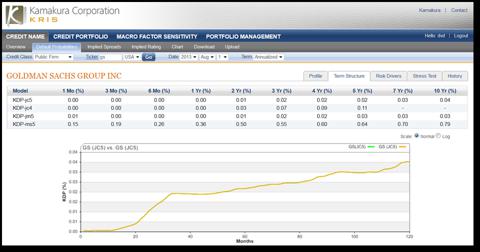
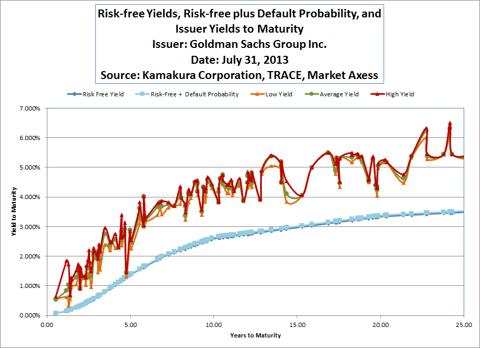
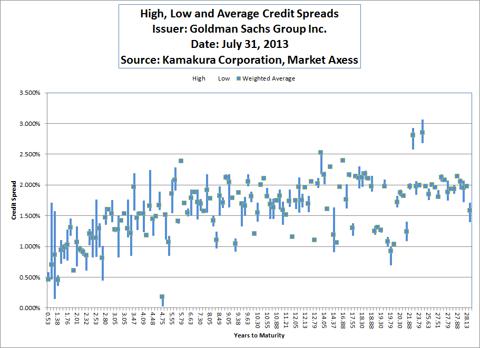

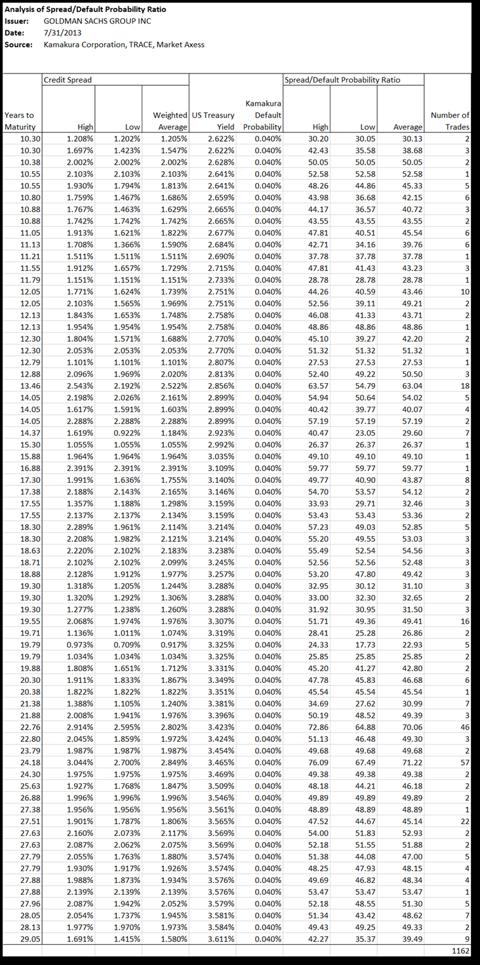
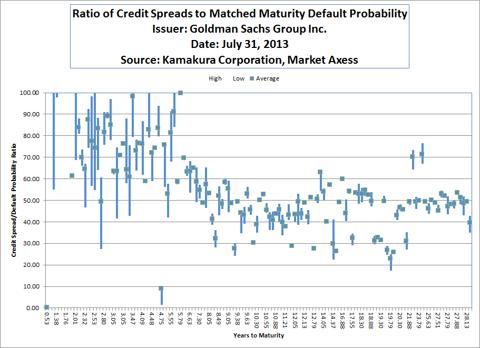
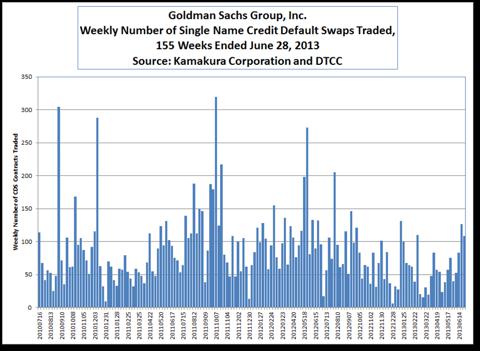
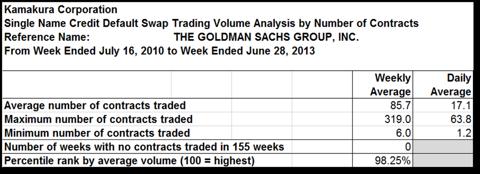
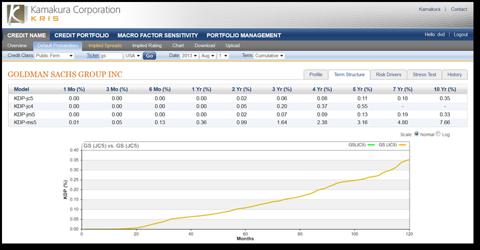
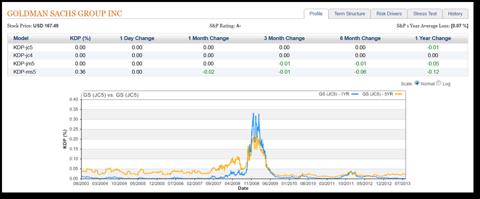
 [ Enlarge Image ]
[ Enlarge Image ] [ Enlarge Image ]
[ Enlarge Image ] [ Enlarge Image ]
[ Enlarge Image ] [ Enlarge Image ]
[ Enlarge Image ]

 Nati Harnik/AP
Nati Harnik/AP  Pandora Media (P) has a lot of similarities to Netflix — a new company that's attacking an old (but huge) industry with many other players also looking to get into the field.
Pandora Media (P) has a lot of similarities to Netflix — a new company that's attacking an old (but huge) industry with many other players also looking to get into the field. 